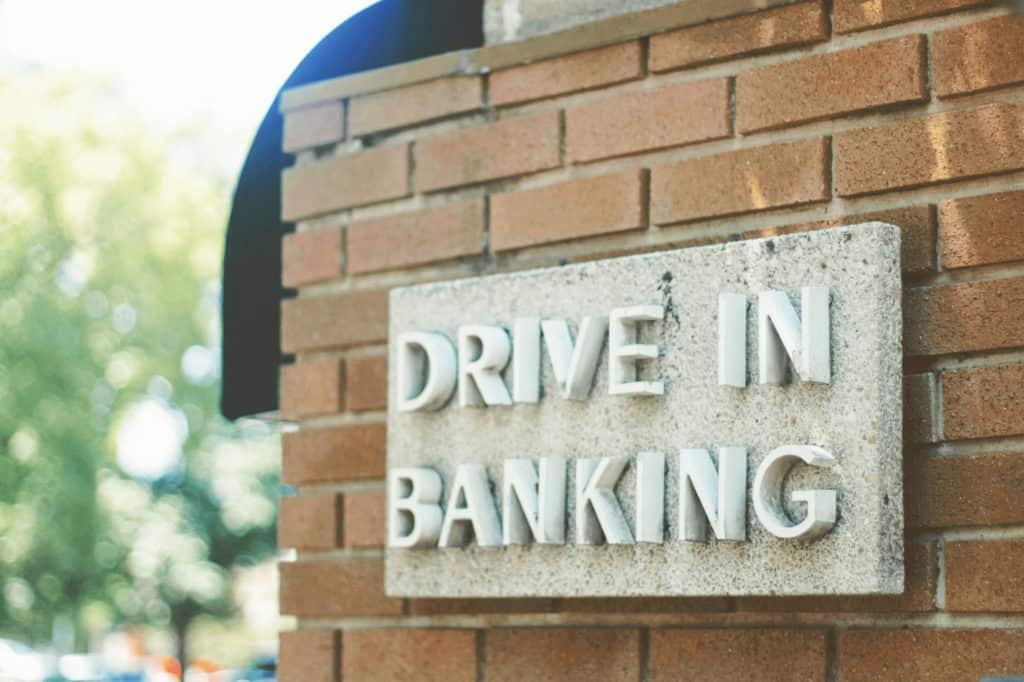🎉 Tillful is now part of Nav! Find the best business checking account for you at Nav
How Banks Assess Credit Risk: The Small Business Owner's Guide
Have you ever wondered why the best interest rates are the hardest to qualify for? Or why SBA loans, the crème de la crème of small business loans, require so much documentation? You’re probably aware that good business credit comes with perks, but it might be less clear as to why. Well, it all comes down to credit risk. Your business credit score is an indicator that banks and other financial institutions use to gauge the risk associated with lending to your small business.
What is Credit Risk?
The term “credit risk” refers to a lender's possibility of losing money in the event a borrower fails to repay a loan or meet other contractual obligations. In other words, it's the probability of default. The “riskier” a borrower, the more likely that they will default on a loan, line of credit, or other financial product. For the purposes of this article, we’ll be referring to “loans” as a catch-all word for financing.
How Lenders Make Money
Financial product structuring can get really complicated, but for the most part, a lender makes money off the interest associated with the loan. They sometimes also make money off of selling your loan as a bond on the secondary market. If that sounds cumbersome, it is, but all you have to remember is that either way, whenever you take out a loan it is at a cost, and someone needs to get paid.
The way that lenders get paid is by you, the borrower, paying back your loan in full with interest. That means that when deciding whether to extend funding to you, issuers have to make an educated guess as to whether your business will be able to repay via a credit risk assessment. When it comes to debt financing, like we’re talking about, banks (and even alternative lenders) can be pretty risk-averse. If their credit risk models show any indication that they could lose money on your loan, then they’ll likely opt to decline you.
How Lenders Assess and Hedge Against Risk
As previously stated, credit risk assessment essentially boils down to an educated guess. Even with the best data and brightest minds, credit risk management is a game of probability. To assess a borrower’s odds of paying back debt, lenders take into account a few different factors.
Borrower Reputation
A borrower’s reputation can be assessed in a few different ways: by their business credit score, their relationship with the lender, and their business’s financial health. Financial health, in this case, mainly refers to available cash reserves, revenue patterns, and any assets the business owns. When assessing risk, lenders typically look at what’s called the “Five C's.”
- Character - the borrower’s credit history. Business credit score can serve as a stand-in here.
- Capacity - whether the borrower has enough income to pay the proposed debt amount. This is why lenders ask for your financial statements and look at your other liabilities (other loans).
- Capital - the higher the equity contribution, typically in the form of a down payment, the lower the risk
- Collateral - an alternative source of repayment, usually in the form of assets like company equipment, if the borrower cannot repay in cash
- Conditions - also referred to as the “loan structure.” This refers to the interest rate and any other terms and conditions, such as the repayment schedule.
Lending Product Terms and Conditions
A lender has two considerations to factor in when determining whether to approve a borrower’s funding application. These are the odds that the borrower will be able to repay in full, and if the lender estimates that it has enough reserves to cover all of the loans it has originated.
Lenders build a loan's conditions based on the risk factors they determine that they need to hedge against. Taking on higher risk means that the lender either requires a higher payout (in the form of higher interest), or a means of protecting themselves against the possibility of the borrower's default. Some of the ways lenders hedge against risk of default are:
- Interest rates - higher interest rates are charged to riskier borrowers, whereas those with a solid credit profile typically get charged less
- Term length - if a borrower is deemed risky, a lender may offer a shorter payback period to mitigate their risk (and vice versa for creditworthy borrowers)
- Collateral - a lender may require a certain amount of collateral in order to originate the loan for certain borrowers
- Loan amount - a lender may simply lend a lower amount of money to increase the odds of repayment
- Payment schedule - is the borrower required to pay back daily, weekly, or monthly? The higher the risk, the higher the frequency in order to mitigate repayment risk.
This is why, as a new business, you may not qualify for a large amount upfront. Because your business doesn’t have a long credit history, a lender can’t as accurately assess your character (as a borrower). In addition to this, a new business may not have as strong of a balance sheet (namely: revenue, cash reserves, or other collateral). A lender will hedge against their perceived risk of loss given default by originating a lower loan amount at a higher interest rate. This is also why small businesses with no credit or bad credit often can only qualify for merchant cash advances, which are the most expensive lending products on the market.
As you build credit history for your business and increase your assets, you can begin to demonstrate to lenders that you are a reliable borrower, which can win you better loan terms. This is especially true if you stick with the same lender for all your financing needs. With that, let’s talk about your business credit as it relates to credit risk.
Business Credit and Risk
Business credit is assessed differently than personal credit, and is tracked separately. Business credit scores are not only measured on a separate scale that ranges from 0 to 100 (personal credit scores range from 300 to 850), but they’re also available for public access. A good business credit score of 80 or more will make it easier to secure better loans (though a lower one doesn’t necessarily bar you from funding altogether).
It’s important to understand that banks often outsource business credit assessments to external bureaus. The most common bureaus used in the U.S. are Dun & Bradstreet, Experian, and Equifax. FICO has also come out with a small business credit score, though it is a newer scoring model, and therefore not as widely used. Each bureau employs a slightly different set of metrics for assessing your business credit score, and they will seldom disclose their methodologies to the public.
That said, there are some common factors that the credit bureaus take into account when calculating your business credit score. You should check each specific score breakdown separately, but for the purposes of understanding how business credit relates to lending risk, here is a general breakdown.
Top factors in your business credit score
1. Payment History
Do you usually pay your suppliers and credit cards on time? Are your customers also timely? What does your cash flow look like? Unlike personal credit, business credit takes into account how quickly you make payments down to the day. Paying an invoice in one day is more favorable than paying in 30 days.
Reliable payment history has a significant impact on your company’s credit profile. Avoid delinquent payments at all costs, as they are the number one factor that can bring your business credit score down. Lenders will also take special note of this on your credit report.
2. Age of Credit History
An established business with a long credit history and a track record of timely payments will score higher than a brand new business with less than a year under its belt. Banks and credit bureaus alike seek reliability as a key indicator, as longer credit histories allow them to more accurately review a company’s ability to pay back loans. Commercial banks, which often give the best loans at the best rates, look for established businesses that have weathered market fluctuations, with two years in business being a common minimum requirement. Lastly, note that the time in business refers to how long your business has officially been registered — that’s why it’s so important that you register your business early (ideally right when you start it).
3. Debt and Debt Usage
Keep your debt under control and, if possible, don’t max out your credit lines. High usage indicates to lenders that your business may not be able to fund itself on its own cash flow alone. If you need to fund your business activities with outside sources, then will your business be able to pay back a loan? And if you’re already maxing out all your other sources, then will the lender be able to get their money back? Whether or not you know you can pay isn’t the issue — it’s about what the lender sees.
Unlike personal credit scores, business credit scores also take into account your credit mix across loans, lines of credit, credit cards, tradelines, etc. This is so that lenders can better assess how much you are leveraged, as well as your other credit obligations. This matters because it determines where the lender falls in your payment stack; if you default, do they get paid out first, second, third, etc.?
4. Public Records
All public records get recorded on your business credit report. These include local, county, and state court minutes, liens, bankruptcies, and collections. Lenders don’t like to see liens and other derogatory marks, so if you have any, it’s best to build a history demonstrating excellent financial habits before applying for funding. Also, if any negative marks make it on your credit report that shouldn’t be there, request to get them removed.
5. Industry Risk
The lower your industry risk, the easier it will be for you to secure financing. Keep in mind that certain industries and sectors are classified as higher risks than others. Specifically, if your business falls under real estate investing, auto sales, travel, transportation, money lending/collecting, or food and beverage, you will be classified as high-risk. Lower risk sectors include pharmaceuticals, healthcare, repairs, and other sectors with demands that aren’t tied to whether or not a market is bullish.
Note that what a lender considers a “high-risk” industry can also shift and change with the market: for example, at the very beginning of pandemic shutdowns, financial services was seen as high-risk. However, this changed when the government stepped in and determined that banks were “essential.”
6. Company Size
The number of employees and annual revenue of your company will give lenders an idea about the size of your business and the potential size of your loan. If you are selling a product or providing a service, this translates to your gross sales volume and the number of active accounts under your name, respectively.
Last Word on How Banks Assess Credit Risk
Building and maintaining a strong business credit score is a constant work-in-progress that depends on good debt management practices, patience, and a knowledge of where your industry stands on the risk management scale. Taking time to care for your business credit doesn’t just help your business stay financially sound; it also signals to lenders that you’re a solid borrower with a low risk profile, making it more likely that you’ll be able to land funding on good terms.


